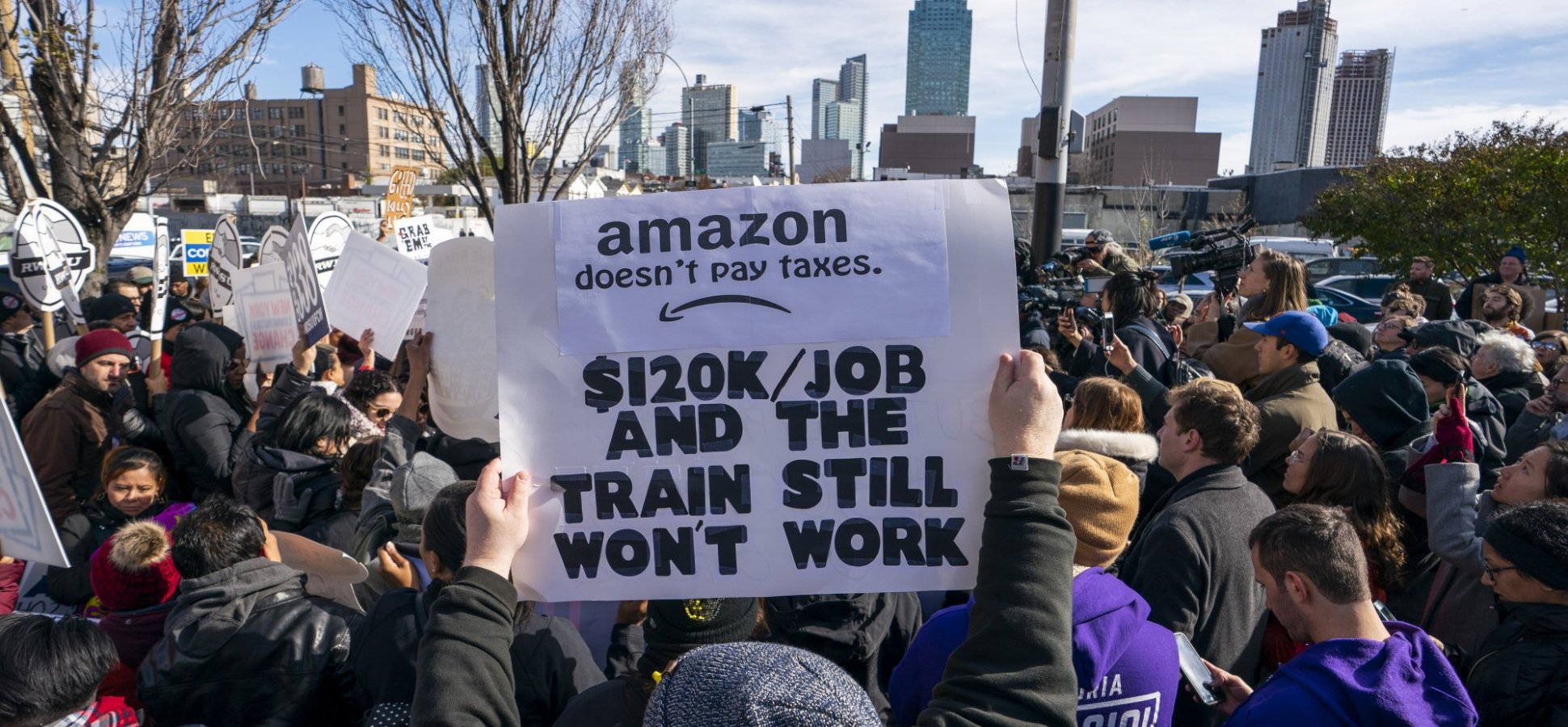
EKATERINA YUDINA – FEBRUARY 11TH, 2021
EDITOR: KALEY KRANICH
Immigration reform is an incredibly contested contemporary policy issue, especially with increased concerns about reported inhumane conditions in immigration detention centers. A Legal Studies course titled “Immigration and Citizenship” offered at the University of California, Berkeley with Professor Carrie Rosenbaum on the United States’ history of immigration and citizenship policies discusses immigration reform at great length. An important reading in this course, Migrating to Prison, by Cesar Garcia Hernandez argued for not simply reform, but for the complete abolition of the immigration detention system used today. The current system of crimmigration, he argues, is not only morally unjust but also economically inefficient and harmful towards communities that rely on these detention centers to sustain themselves. In examining immigration detention abolition as a viable alternative to the imprisonment of immigrants, we thus not only improve the lives of those subject to the already brutal immigration system in the United States, but also those already in our communities.
The current system has increasingly relied on detention as an immigration enforcement strategy with detention centers holding individuals of nearly every immigration status, from lawful permanent residents to asylum seekers. Most of those individuals are believed to pose no danger to society or be a flight risk, despite continued detention for prolonged periods of time. Detention centers, regardless of their exponential growth in use, have no regulations or enforceable standards concerning their conditions, which include free legal services, library materials, medical treatment, access to telephones, and mental health care. As a result, many detainees never receive legal representation, impacting possible petitions for better detention conditions as well as successfully fighting their cases despite legitimate claims to the United States. The current favored use of detention centers heavily impacts families as well, with the Department of Homeland Security (DHS) up until recently using the detention of families seeking asylum as a deterrent for future migration from Central America. Nearly 88% of Central American families detained by the DHS have demonstrated to an asylum officer that they have a credible fear of persecution if deported, yet rather than beginning legal proceedings in order to gain legitimate status in the United States, these families continue to be held in detention centers fighting their cases. With rampant abuses in these detention centers reported and investigated by organizations such as the American Civil Liberties Union (ACLU), it seems as though immigration reform is necessary, and whether or not immigration detention centers should continue to exist is a topic worth exploring.
Defining Immigration Detention Abolition
The existence of intense policing and immigration detention is detrimental to the psyche of noncitizens, as it treats them as simply workers and dehumanizes them at every turn. Rather than giving those in immigration detention centers a chance at positively integrating into communities, the immigration prison system sees migrants as disposable and dangerous instead of potential future United States citizens.
Immigration prison abolition, as envisioned by Hernandez in Migrating to Prison, involves not only the full dismantling of the immigration detention centers that we know today, but additionally, building a system for the integration of noncitizens into communities. This could be done by providing progressive opportunities that do not rest on the exploitation of people as immigration prisons do today. Hernandez cites Angela Davis, an advocate of prison abolition, when stating that abolition isn’t only tearing down the current system of immigration detention in place, but building something up as well. He quotes Davis’ argument that abolition is “re-imagining institutions, ideas, and strategies and creating new institutions, ideas, and strategies that will render prisons obsolete.” The creative component of prison abolition is vital to ensuring that an exploitative system such as the one that we currently have in place does not arise again when replacing immigration detention.
Abolition Instead of Reform: Economics of Immigration Detention Centers
As a moral argument, Hernandez states that prison reform is not enough to do away with the massive exploitation and suffering that accompanies immigration detention, and that reform would rather solidify and entrench the institution even further. For this argument Hernandez cites French philosopher Michel Foucault in stating that efforts to reform prisons only would transform them into beacons of “enlightened policymaking” and become “warped humanitarianism.” Efforts to reform detention centers actually provide legitimacy to the institutions and abuses within the institutions themselves, in that if proposed “enlightened” reforms are enacted, overall issues from the existence of detention centers are minimized in the public eye. The simple existence of detention centers and imprisonment of those including lawful residents and asylees is in it of itself inhumane, regardless of any reformation movements. Hernandez believes that reforms to immigration detention centers allow for these prisons to gain a mask of humanitarianism, despite not addressing the root of the detention issue. As a result, Hernandez turns to abolition.
Yet aside from the moral objections to detention reform, Hernandez argues that the abolition of the immigration prison system is necessary in the context of the deep-rooted and economically motivated connections between criminal prisons and immigration detention centers. The issue stems from the existence of rural communities that rely heavily on the maintenance of prisons or detention centers in order for their communities to not suffer economically. These communities reap the benefits of employment in the facilities as well as the traffic (lawyers, family, etc.) these facilities bring. As a result, if a prison is being shut down by the Bureau of Prisons (BOP), Immigration and Customs Enforcement (ICE) steps in and utilizes the same facility as an immigration detention center. Prisons are often owned by private companies, such as CoreCivic, that receive revenue from the BOP, resulting in economic benefits to nearby communities such as Milan, New Mexico and Willacy, Texas. When the BOP cut funding to the Cibola County Correctional Center (marred by troubling abuses of inmates), Milan signed a contract with the DHS to re-establish the facility as a detention center for immigrants facing deportation through the court system. Communities such as Willacy and Milan find an appeal in detention centers in that with established prison or detention centers comes job security and revenue from the federal government, which can spur growth in slumbering rural economies.
Consequently, without abolishing immigration prisons at their root, Hernandez states that “[immigration prisons] will continue to resurrect themselves.” Accordingly, without completely dismantling the system of immigration detention (physically, as well as in the public’s mind) and reimagining our immigration system as a whole, the exploitation of noncitizens that currently fall into immigration prisons will not cease. Thus, rather than detrimental reform and the transition that currently exists between ICE and BOP prisons, a complete abolition of the immigration prison system is in order, along with a community-oriented approach to incorporating immigrants into our society. Some of the examples that Hernandez cites include at least granting every migrant a lawyer, increasing the volume of social workers available to noncitizens, and giving noncitizens work permits to allow self-sufficiency.
Replacing Immigration Detention Centers
Hernandez believes that a system where ICE ceases to vehemently police noncitizens is much more beneficial for society as a whole than current immigration prisons. He first cites that when lawyers (from the New York Immigrant Family Unity Project) were provided for everyone facing deportation in a certain immigration detention facility, a surge of those people were released. Additionally with those who were released, 98% of those individuals showed up for their court dates. This applies to the concept of “procedural justice,” which essentially states that if given a fair deal or trial, more people tend to comply with regulations even if they do not like the outcome. Thus, if treated in a fair manner with a deal of respect, those in immigration detention facilities are more likely to comply with set regulations, and hence do not need to be detained in the first place.
Expanding on this idea, Hernandez states that “prisons aren’t just unnecessary; they’re counterproductive,” as they likely create sentiments of resentment and more unwillingness to comply with the current system of immigration detention. Hernandez offers up the example of Catholic groups in the 1980s and 1990s that provided job training, weekly meetings, education, and substance abuse treatments to groups like the Mariel Cubans. The groups that were given these social resources had larger success rates in complying with court proceedings. These types of programs are also far less expensive than the alternative of detention, which makes Hernandez write-off immigration prisons as “ugly, generations-old politics of exploiting segments of humanity.”
Alternatives to detainment cost pennies in comparison to immigration prisons. Attorney Anna Cabot from the American University Washington College of Law cites that the cost of “Alternatives to Detention” (ATD) programs amount to $4.50 per day per person, versus the maintenance of an adult detention bed ranging from $133.99 to $208 per day. This disparity in costs ends up hurting communities that maintain prisons, in that local officials that build prisons often go into debt when they are unable to fill beds, and as a result do not get money from the government. This forces local facilities to turn to large private corporations, which inherently capitalizes on human imprisonment in order to be profitable and supposedly beneficial for the community. These benefits are not always exacted, however, and turning to private corporations can backfire on small communities that could go into debt and lose jobs if prison or detention center beds begin to empty. If communities such as Willacy, Texas and Milan, New Mexico consider implementing social programs designed to provide education, job training, and substance abuse rehabilitation, this would allow immigrants to contribute to these local economies while simultaneously providing more local job opportunities. Additionally, local officials would not go into debt, and thus no longer need to rely on private prisons that dehumanize and exploit immigrants. Both current citizens of the community and immigrants thus benefit from programs that are alternatives to detention.
Setting Economics Aside
Hernandez also stresses the importance of respecting and supporting migrants that are not necessarily extraordinary or have even made mistakes in the past. He states that “some migrants steal, and others hurt people. Denying that reality is to hold migrants to an impossibly high bar” and “we need to stop pretending that crime is an indication of moral worth.” Abolishing the immigration prison system should not only come from the argument that it is economically unnecessary and that migrants are less likely to be criminals and thus placed in detention centers, but from the fact that immigration detention facilities are inhumane for any human being. Regardless of whether they are a “good immigrant” or a “bad immigrant,” these categories are irrelevant when it comes to basic human rights and decency.
Featured Image Source: Atlanta Magazine
Disclaimer: The views published in this journal are those of the individual authors or speakers and do not necessarily reflect the position or policy of Berkeley Economic Review staff, the Undergraduate Economics Association, the UC Berkeley Economics Department and faculty, or the University of California, Berkeley in general.



